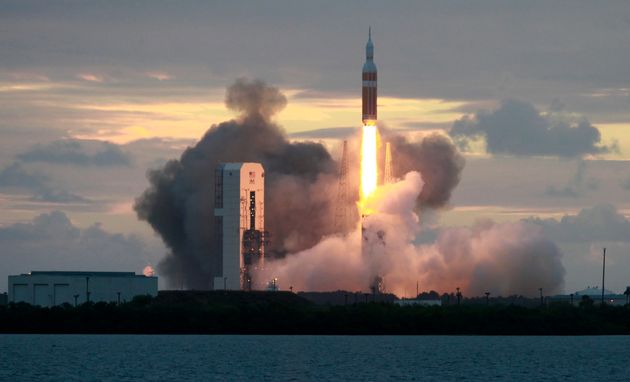Why Mars Can Be Affordable And Achievable

SCOTT AUDETTE / REUTERS
Why should humans venture to Mars? In some sense, it is to fulfill a longing in our collective psyche. Humanity has dreamed of walking on Mars since travel above the Earth’s surface became feasible... Those dreams seemed to be on the verge of being realized with the dawn of the Space Age in the mid-20th Century, but for decades Mars remained out of reach to human explorers on site. That frustrating situation has resulted in what many have come to see as Mars being perpetually “20 years away.” In the terminology used for space launches, we have been in a “hold” for the past 30 years. Today, however, we can finally say that the countdown clock is running. We are going to Mars, twenty years and counting! If we stay the course, the first humans will set foot on the Red Planet by the year 2033.
New technologies have become available that have allowed us to take a fresh look at how to approach human Mars missions and, as a result, to tackle the hardest technical problems that had previously led to a hold in the countdown. And these approaches have given us the ability to design an architecture that can be brought on line incrementally, which keeps the annual expenditures within a reasonable projected NASA human spaceflight budget.
The key to this architecture is to separate much of the supplies and equipment and send them in advance of the crew. By prepositioning equipment, supplies, and even return rocket stages (more than 80 percent of the total mass), using propulsion systems such as solar electric propulsion (SEP) that are extremely energy efficient for long-haul cargo missions, we can save more than half the costs versus transporting everything using chemical propulsion systems that are needed to reach orbit.
On the other hand, the Space Launch System (SLS) is the key to placing large blocks of payload into Earth orbit. An analogy here on Earth would be how intermodal shipping of supplies and manufactured goods is accomplished. Short haul is accomplished by trucks or rail, while long haul is accomplished by massive ships. In this same way, SLS accomplishes the short haul mission to orbit, whereas the cargo is transported over the much larger distance to Mars by solar electric transport ships. The two different propulsion systems, each of which is appropriate for its particular type of mission, are complementary. And to transport the astronauts, we add in a third element: the Orion multi-purpose crew vehicle as well as a deep-space habitat module, which together provide living space and life support systems.
Once all the elements arrive in Mars orbit, the final two pieces of the mission come into play. Improved entry, descent, and landing (EDL) approaches will safely and precisely land larger payloads on the surface. The largest payload elements, such as the surface habitat and the ascent vehicle to return the crew to Mars orbit, weigh 30 to 40 metric tons. Today we know how to land only one metric ton on Mars, so this is one of the challenges that still need to be overcome. However, NASA is already working on improved decelerators and other techniques such as supersonic retro propulsion. Such technologies need to be perfected within the next ten years, because the most massive payload elements will need about four years to be prepositioned. Once all of these are safely in Mars orbit, the crew can launch for the roughly seven-month transfer to Mars using cryogenic chemical propulsion stages to propel Orion and the deep space transit habitat.
The power of this approach is that we can use in-space technologies that we already know work well and scale them up to accomplish the first Mars missions. Other technologies, such as on-orbit refueling or nuclear thermal propulsion, can be proven and incorporated later as they are matured. The ultimate goal of manufacturing propellant from space resources, however, requires several steps before we can utilize such methods. First, we must locate the resources and determine their abundance. Next, methods of extracting and processing the material must be developed. Then the process of manufacturing the desired propellant, such as oxygen and methane, in the quantities required must be proven in either deep space or on the planetary surface. Therefore, while in-situ propellant production is a very attractive ultimate goal, it does not make sense to place in the critical path for the first missions.
Mars is within our grasp. With a sustained program of risk reduction activities over the next 10 to 15 years, we will eliminate the knowledge gaps that still remain and we will build up an infrastructure that is capable of sustaining human missions of ever-increasing capability. As we mature approaches that improve upon this architecture, we will incorporate them into the overall structure. We need to take the first step that proves the possibility. Mars beckons us and we may be living now at the perfect time – a combination of technology readiness, public interest, and political will – to answer that call.
Joe Cassady is Executive Director, Space, Aerojet Rocketdyne
This piece is part of a special op-ed series, curated in partnership with Explore Mars, in which contributors from diverse fields such as science, education, policy, business and culture answer a simple question: “Why Mars?” For more, follow the links below or visit exploremars.org.
No comments:
Post a Comment